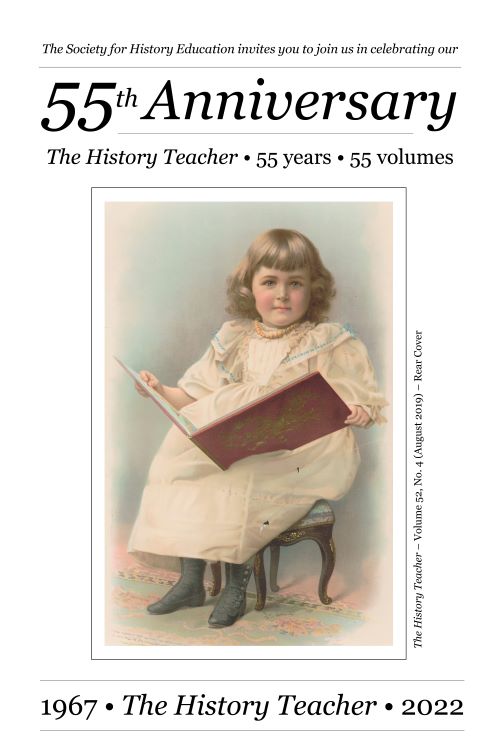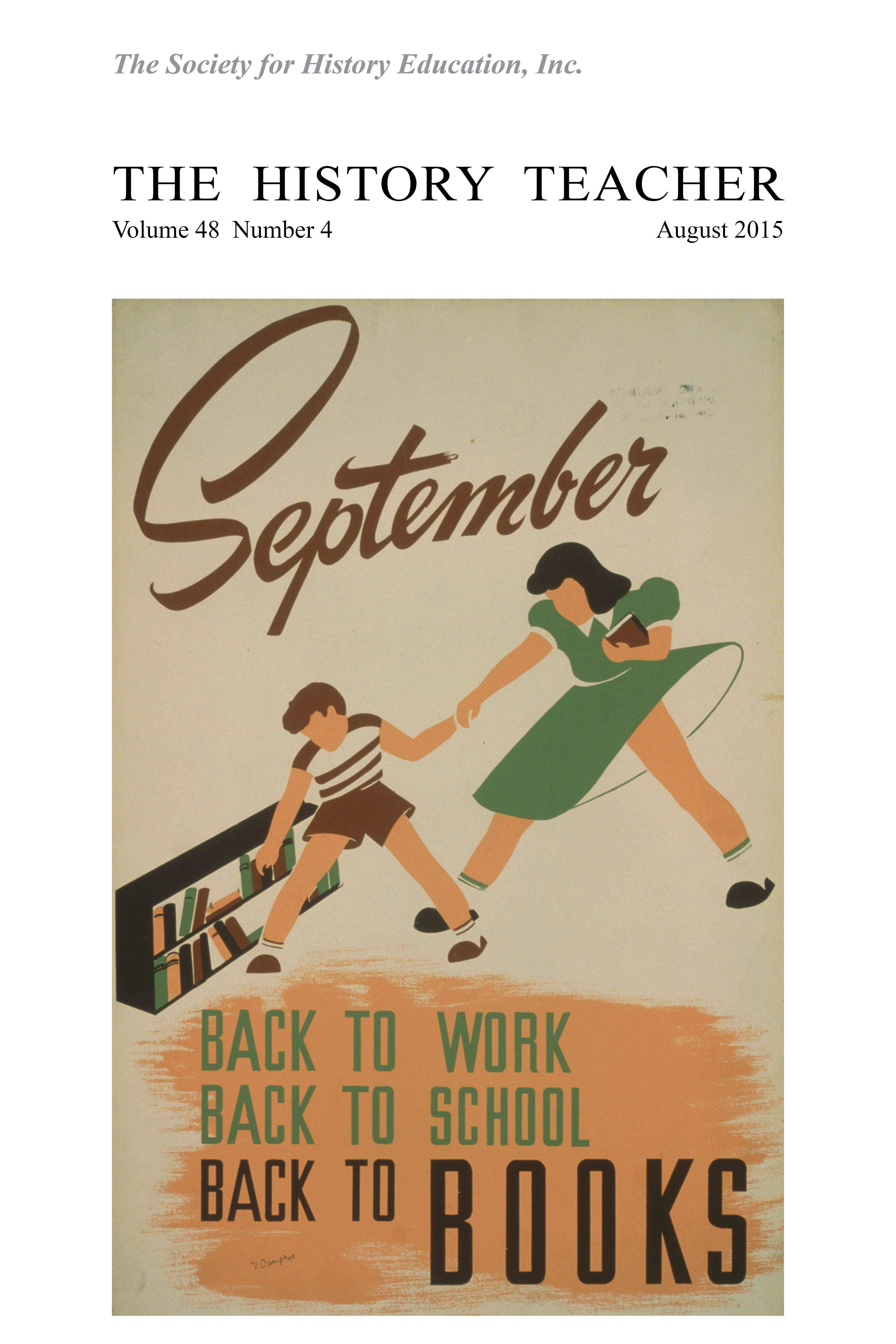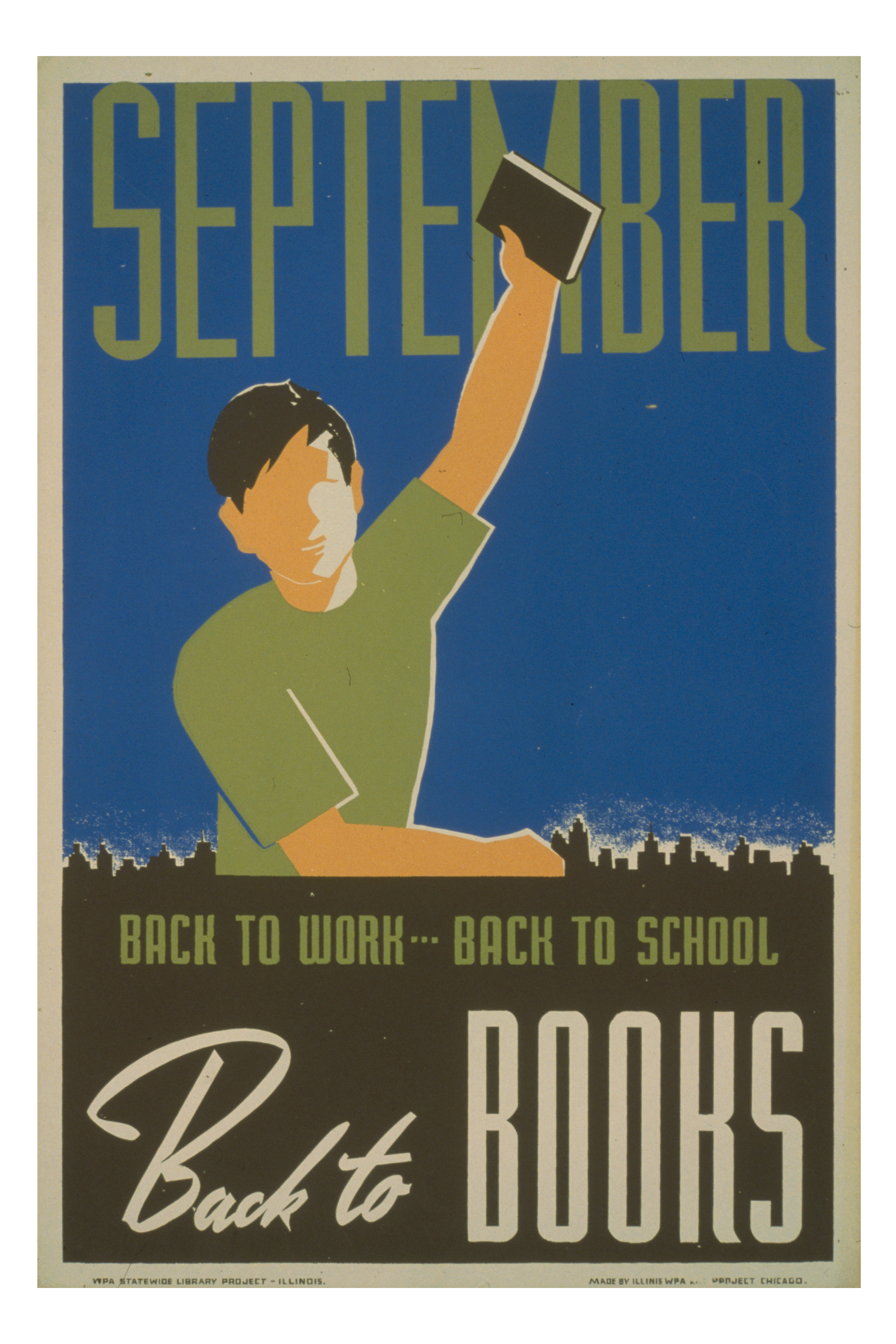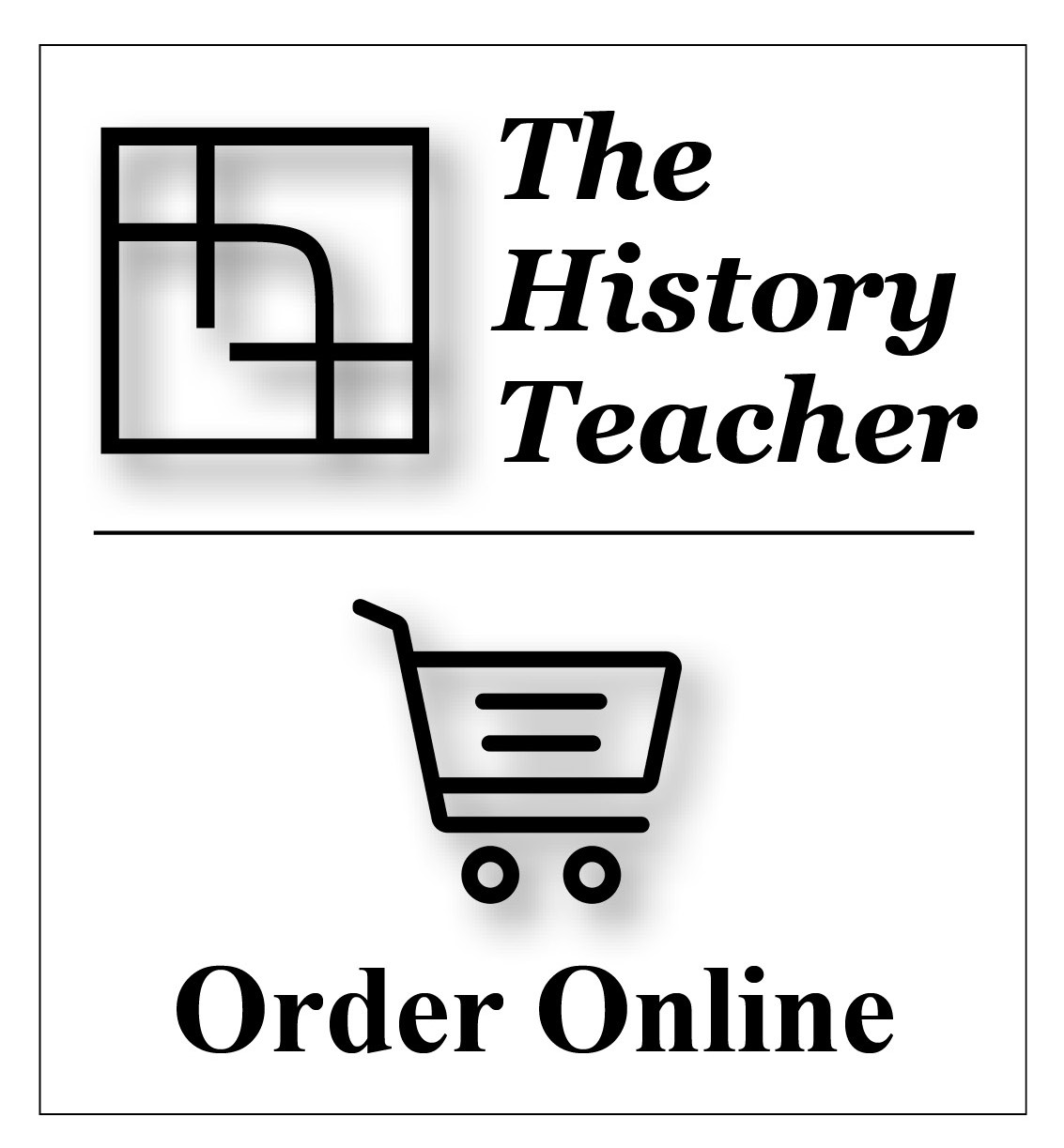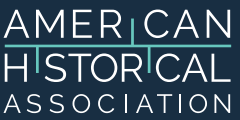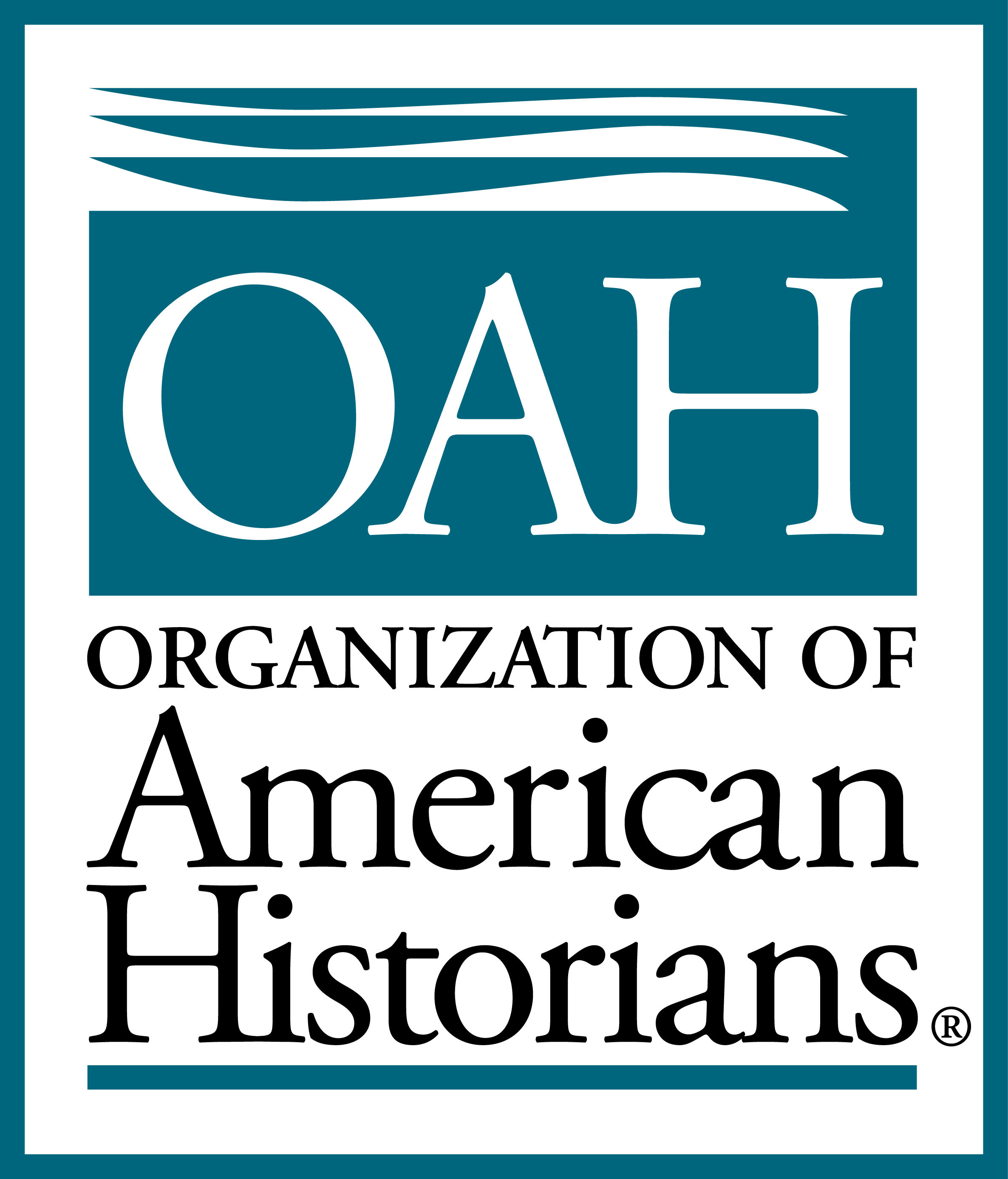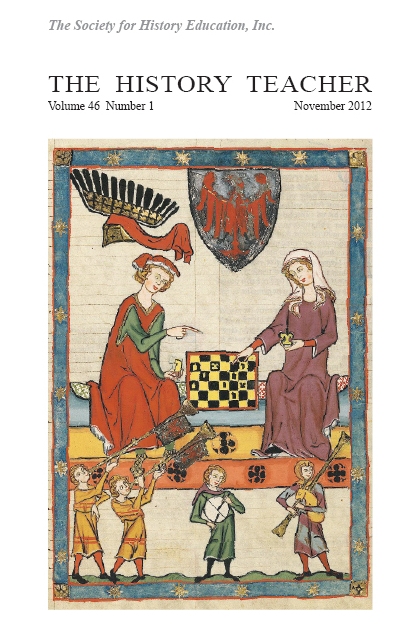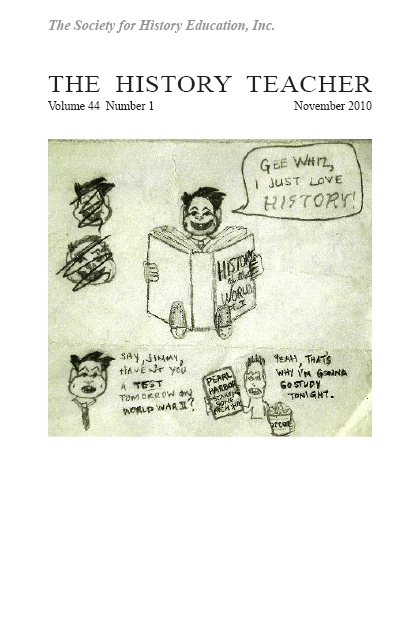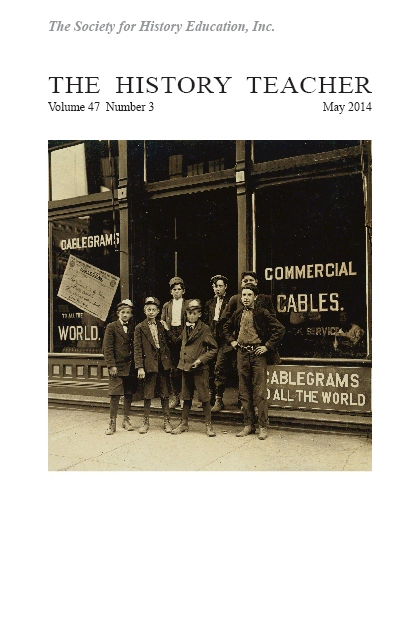The History Teacher
Volume 48, No. 4
August 2015
Front Matter | Back Matter
THE CRAFT OF TEACHING
Active Teaching and Active Learning
Sustaining Changes in History Teachers' Core Instructional Practices: Impact of Teaching American History Ten Years Later
by Rachel G. Ragland
(pp. 609-640)
Incorporating Service Learning into a General Education History Course: An Analogical Model
by Mark Wild
(pp. 641-666)
Textbooks and Trade Books in K-12 History
What Does it Mean to be an American?: Training History Students and Prospective Teachers to See the Assumptions in their Textbooks
by Brent Ruswick
(pp. 667-692)
Assessing and Addressing Historical Misrepresentations within Children's Literature about the Civil Rights Movement
by John H. Bickford III
(pp. 693-736)
THE STATE OF THE PROFESSION
The Making of California's History-Social Science Standards: Enduring Decisions and Unresolved Issues
by Brad Fogo
(pp. 737-775)
REVIEWS
Full Reviews Section
(pp. 777-788)
Church, Stephen. King John and the Road to Magna Carta
by Mark G. Benton Jr.
Fichtner, Paula Sutter. The Habsburgs: Dynasty, Culture and Politics
by Alexander Vari
Kopelson, Heather Miyano. Faithful Bodies: Performing Religion and Race in the Puritan Atlantic
by Christine DeLucia
Moreira, Peter. The Jew Who Defeated Hitler: Henry Morgenthau Jr., FDR, and How We Won the War
by Don Schwartz
Rossinow, Doug. The Reagan Era: A History of the 1980s
by John Snetsinger
Sachar, Howard M. The Assassination of Europe, 1918-1942: A Political History
by Dino E. Buenviaje
Talley, Sharon. Southern Women Novelists and the Civil War: Trauma and Collective Memory in the American Literary Tradition since 1861
by Mary Ellen Pethel
SPECIAL SECTION
Index to Volume 48
(pp. 789-796)
IN EVERY ISSUE
607 Contributors to The History Teacher
797 Questionnaire for Potential Reviewers
798 Membership/Subscription information
800 Submission Guidelines for The History Teacher
ADVERTISERS IN THIS ISSUE
608 Society For History Education: The History Teacher, Volume 48
776 Association for Asian Studies: Teach About Asia, Learn About Asia
CONTRIBUTORS
John H. Bickford III is a former Mid-Prairie (IA) Middle School Social
Studies Teacher and current Associate Professor of History and Social
Studies Education in the Department of Early Childhood, Elementary, and
Middle Level Education at Eastern Illinois University. His doctorate in
Secondary Social Studies Education is from the University of Iowa. He
has published almost two dozen articles and books on the texts and tasks
that facilitate elementary- and middle-level students' historical thinking.
Brad Fogo is the Director of Curriculum Development for the Stanford
History Education Group and is currently leading the development of
world history materials. He also works as a Clinical Research Associate
for history education at the Center to Support Excellence in Teaching
(CSET). A public school history teacher for nine years, he holds a Ph.D.
in Curriculum and Teacher Education from Stanford.
Rachel G. Ragland (Ed.D., Teachers College, Columbia University,
1989) is Associate Professor and Chair of Education at Lake Forest (IL)
College. She teaches curriculum design, secondary instruction, social
studies methods, fieldwork, and student teaching seminars, and supervises
interns and student teachers. She served as Assistant Academic Director
for a Teaching American History grant project and is currently an official
scorer for History/Social Studies edTPA portfolios and is implementing
edTPA into pre-service teacher preparation programs.
Brent Ruswick earned his Ph.D. in the History of Science at the University
of Wisconsin, and presently teaches history and social studies education
courses and supervises student teachers at West Chester University of
Pennsylvania. In addition to his first book, Almost Worthy: The Poor,
Paupers, and the Science of Charity in America, 1877-1917, Ruswick
has published several historical and pedagogical articles. He also has an
active State of Nebraska teaching license for history and political science,
grades 7-12.
Mark Wild has taught for twelve years at California State University,
Los Angeles, where he specializes in the urban and religious history of
the modern United States. He was a founding member and former chair
of what is now the Honors College Steering Committee, which developed
the curriculum from which his case study is taken.
|
